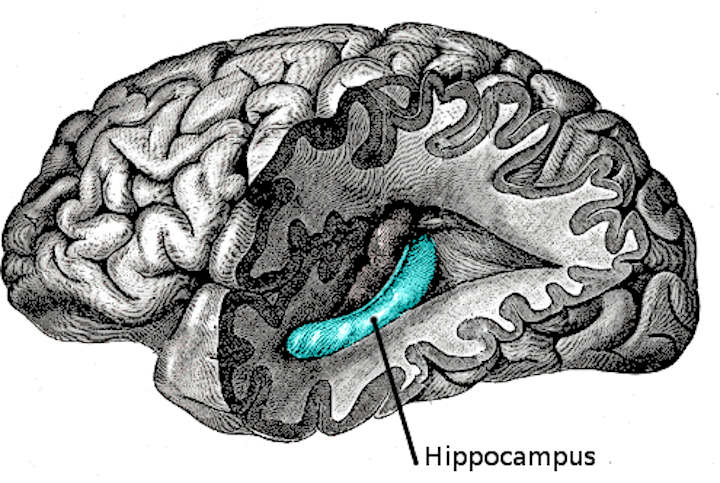The mechanism behind synthetic molecules latching onto the amyloid peptide fibrils thought to be responsible for Alzheimer’s disease has been discovered by researchers from Rice University and the University of Miami. Metallic dipyridophenazine ruthenium molecules, designed at Rice, bind strongly to pockets created when fibrils form from mis-folded proteins which cells fail to destroy. When…
Category: Neurology
What Is White Matter?
White matter refers to axon tracts and commissures. Long thought to be passive tissue, it actively affects learning and brain functions, modulating the distribution of action potentials, acting as a relay and coordinating communication between different brain regions. White matter is named for its relatively light appearance resulting from the lipid content of myelin. However,…
Second Alzheimer’s Pathway in Genetic Marker Found
A new set of genetic markers for Alzheimer’s has been discovered by researchers at Washington University in St. Louis. This marker establishes a second pathway through which the disease grows. Most of the existing genetic research on Alzheimer’s involves amyloid-beta. Amyloid-beta is known to be an important constituent of the plaques which build up in…
Does Aluminum Cause Alzheimer’s And Breast Cancer?
Silvery, ductile, malleable and so very, very useful, aluminum is the most common metal in the Earth’s crust. But despite its importance (or perhaps because of it), there are fears that this metal causes everything from cancer to Alzheimer’s disease. From aircraft to tableware, aluminum forms an important and ubiquitous part of our lives. It’s…
Acting Out Dreams Linked To Development Of Dementia
The strongest predictor of whether a man is developing dementia with Lewy bodies, the second most common form of dementia in the elderly, is whether he acts out his dreams while sleeping, Mayo Clinic researchers have discovered. Patients are five times more likely to have dementia with Lewy bodies if they experience a condition known…
Epilepsy Definition
Epilepsy (from the Ancient Greek verb ἐπιλαμβάνειν meaning “to seize, possess, or afflict”) is a group of neurological disorders characterized by epileptic seizures. Epileptic seizures are episodes that can vary from brief and nearly undetectable to long periods of vigorous shaking. In epilepsy, seizures tend to recur, and have no immediate underlying cause, while seizures…
What is the Hippocampus?
The hippocampus (named after its resemblance to the seahorse, from the Greek ἱππόκαμπος, “seahorse” from ἵππος hippos, “horse” and κάμπος kampos, “sea monster”) is a major component of the brains of humans and other vertebrates. Humans and other mammals have two hippocampi, one in each side of the brain. It belongs to the limbic system…
Autonomic Nervous System Definition
The term autonomic nervous system (ANS) refers to collections of motor neurons (ganglia) situated in the head, neck, thorax, abdomen, and pelvis, and to the axonal connections of these neurons. Autonomic pathways, together with somatic motor pathways to skeletal muscle and neuroendocrine pathways, are the means whereby the central nervous system (CNS) sends commands to…
What Is The Subthalamic Nucleus?
The subthalamic nucleus is a small lens-shaped nucleus in the brain where it is, from a functional point of view, part of the basal ganglia system. In terms of anatomy, it is the major part of the subthalamus. As suggested by its name, the subthalamic nucleus is located ventral to the thalamus. It is also…
